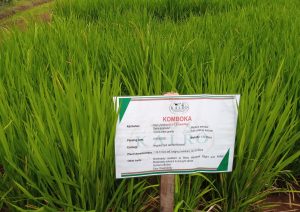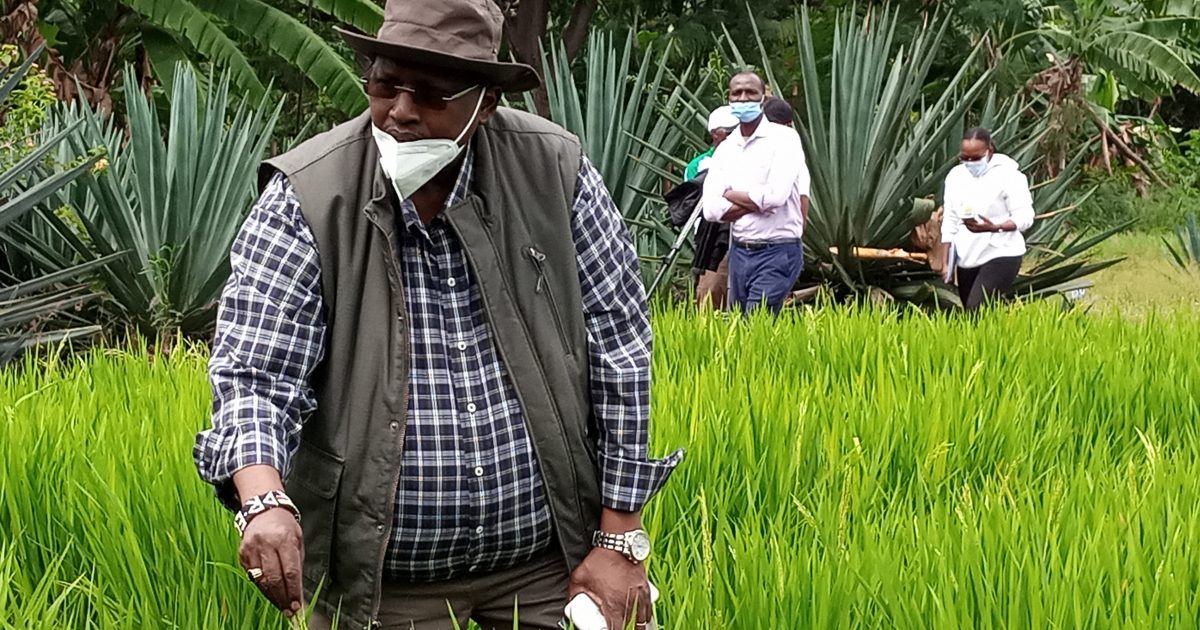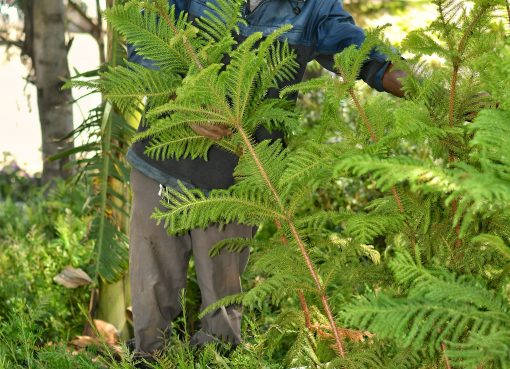Kenya Agricultural and Livestock Research Organization (KALRO) has formally launched rice variety dubbed “komboka” after years of research.
The variety has the potential to be produced for the mass market thus reducing the country’s reliance on imports.
The komboka rice variety can also be grown in non-traditional rice growing areas as it requires less water making it suitable for both irrigated and rain-fed lowland ecologies.
Speaking during the launch of Komboka rice variety in Mwea, Kirinyaga , KALRO Director General Dr. Eliud Kireger said Kenya’s domestic rice sector has not satisfied the increasing demand for rice and this is exacerbated by the population growth of the middle class and urbanization of people who are increasingly relying on rice for food.
“We have been operating at an average of 200,000 metric tonnes for a long time and farmers however have been pushing the varieties that they have been planting but have never gone beyond 2.5 to 3 tonnes per hectare,” he added.
The new Komboka variety which has been there since 2013 but on very low uptake, the DG noted, can double the production up to seven tonnes per hectare compared to what is currently being produced.
The new variety, he added, can also be eaten and grown by farmers unlike before where most farmers were just producing the Basmati variety for selling as it fetches more money.
“The basmati rice is expensive rice and farmers would rather sell it and buy Pakistani rice which is of poor quality and cheaper. With this one, they will fetch more money and also eat it,” he said.
The commercial varieties available in the country are also low yielding and restricted to lowland irrigated ecologies
Speaking on the challenge of uptake for the variety, Dr. Kireger acknowledged that most research is funded by donors in breeding but they do not fund for the promotion thus it takes long for farmers to know about the developed variety.

“We are coming out and partnering with private sector and specifically the Mwea Rice Cooperative Sacco who are licensed seed producers and as KALRO we give them the basic seeds which we have bred and they in turn are going to multiply and produce the seeds that can be availed to the farmers,” he said.
Dr. Kireger further encouraged the private sector to also take up other varieties not only for rice but other crop varieties from breeders so that they can avail certified seeds to the farmers, he said.
KALRO, Dr. Kireger added is inviting the private sector to get involved in the commercialization of the Komboka variety because of its high productivity and profitability potential considering that the rice variety is also in line with National Rice Development Strategy (NRDS 2019- 2030) overall goal of increasing food security and incomes through sustainable rice production.
Currently, Dr. Kireger said that 24 acres of seed is planted in Mwea and this is expected to increase ten-fold by next year and hopefully farmers pick it up. “If the seed demand is higher am very sure that the cooperative is going to invest more and produce more because ours is to supply the basic seed to them to produce certified seed.
The seed, he added, is also available currently and since the uptake has been low, government is promoting it to create awareness of the benefits of growing it.
“We expect to get about 1000 metric tonnes and that will be of the certified seeds which will now go into rice production,” he said.
On the pricing bit which is a factor of supply and demand, Dr. Kireger said the Komboka variety is expected to fetch a good price in the market and although it might not be as good as the Basmati it will be better than other local varieties and because of the quality more people will be able to grow it for food as opposed to the imported varieties which have high chemical content and not of very good quality.
Importation rice Bill currently is about Sh. 23 billion per year, and Dr. Kireger added that if the country could produce good quantities of komboka rice, importation will go down and this in turn contribute to bringing down the bill for importation of rice.
The Komboka rice variety by KALRO came after years of collaborative research with International Rice Research Institute (IRRI).
According to Dr. Rosemary Murori, a rice breeder who works IRRI, there is inadequate water for irrigated paddy production and therefore the new variety which has higher yields and is drought resistant can be grown even under the rain-fed conditions.
“This variety can be grown in Western, Eastern and even the Coastal regions as it has some relatively high drought resistance and if there is no water it can still do well,” she said.
Dr. Murori added that high pre- and post-harvest losses of rice which range from 30 to 40 percent especially from Quelea birds who damage total yield loss will be minimal destruction in the komboka because of the structure of the leaf and the way the rice itself is placed
“The advantage of this variety is that it has higher yields compared to the Basmati rice and with good management a farmer will produce 40 bags of 100kgs per acre compared to Basmati which will yield 20 to 25 bags”, Dr. Murori says
Dr. Murori however noted that research is continuing and that they are in the process of improving the Basmati 370 variety but said that breeding takes a long time and also a lot of money but said all is in the pipeline and in the next five years a new improved breed will be out.
The Komboka rice variety, is semi-aromatic, has long slender grains and soft cooking texture. The plant height is 110 – 115 cm, does not lodge and matures in three and half to four months (110 – 120 days).
It requires less water making it suitable for both irrigated and rain fed lowland ecologies and this will therefore allow for expansion of production in non-traditional rice growing areas though it is most ideal for Mwea, Ahero, Taveta, Kilifi, Kwale, Bura, Hola, Bunyala, West Kano, Lower Kuja, Busia, Alupe and any other rice growing area in Kenya.
Currently, the demand for rice per individual per year is 20.6 kgs. In 2019, the country produced 195,000 MT, which is projected to increase by 10 percent to produce 520,000 MT by 2030. Despite this, it is expected that rice import dependency ratio will remain high at 88 percent.
The National Rice Development Strategy (NRDS) of Kenya forecasts that in order for the country to attain self-sufficiency by 2030, the total domestic rice production must increase at a rate of 9.31percent per annum.
By Wangari Ndirangu





